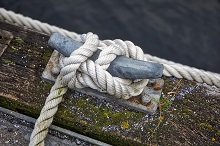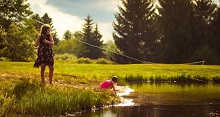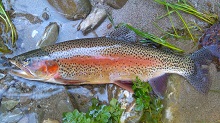Lake Huron Salmon Face More Challenges
Canadian Angling.com Every year brings new challenges to salmon fishing in Lake Huron and this year will be no different.
“It has been a different system every three or four years for most of our lives,” Hewett (DNRE’s Fisheries Co-ordinator for Lake Huron and Erie) recently told a Port Huron fisheries workshop.
The good news for Lake Huron’s predators is that there is more prey fish available, but there is also some bad news to for the predators.
Jeff Schaeffer of the U.S. Geological Survey’s Ann Arbor research station found that the gross weight of the prey fish have doubled in the past year, but the type of prey fish has changed.
The alewives that used to be the main source of food for the fish are still in extremely low numbers, and they have been replaced by tiny smelt, chubs, shiners and sticklebacks. Since they are different, they behave differently. “We are not back to normal by any means, but we do have more prey out there than any year since 2004,” Schaeffer said.
But are predator fish eating them?
Last year, anglers were asked to turn in the stomachs of the fish they caught and this study found some interesting facts. They noted that some of the predator fish were starving. The salmon, lake trout and browns were the worse. Of the 2,000 fish studied, 40% of them had empty stomachs. A groundbreaking study last year that relied on anglers turning in the stomachs of caught fish has surprising answers. Predator fish — salmon, lake trout, browns — are starving. Of the more than 2,000 fish checked in the study, about 40% had empty stomachs. We had noticed this in some of the fish (salmon and rainbow) that we had been catching the past two years. They also noted a change in diet with regards to the fish that had full stomachs. Lake trout are now eating lots of round gobies; walleye eat everything from flies like mayflies to minnows and perch. Steelhead have changed their food source and are eating more insects and reacting more like river rainbows and the Atlantic salmon will eat anything. One big problem is that they have also started to feed on the millions of salmon (Chinook) the DNR are trying to stock.
One of the big problems are the Chinook salmon, they aren’t adapting to the change of forage food. Jim Johnson (DNRE’s Alpena research station) said, “Salmon did not adapt,” he said. The survival rate of the stocked fish is extremely poor and the few that survive can’t find food. One of the Chinooks stomachs that were examined contained a thousand spiny water fleas. They have very little nutritional value. What the fishermen are catching has also changed over the past 10 years. Back in 1998, salmon was the highest species caught by charter boats. This changed dramatically, and Chinook salmon only accounted for 6% of the catch, walleye 55% and lake trout 34%.
“Catching a Chinook now is just interesting,” Johnson said. “If you’re a lake trout fisherman, these are good times.” But there is an inbalance between the predators and prey. “We still have lots more predators than the prey base can support,” he said. “When you have lake trout feeding on bugs at the surface, that should tell you something is going wrong out there,” Hewett said. We noticed this fishing in Georgian Bay over 5 years ago, when we saw lake trout feeding on the surface in the middle of the morning.



